-
FRANCISCO SOBRINO (spanish, 1932-2014)black and white maze, 2019, Eleven black and white painted wooden cubes
Born in Guadalajara in 1932, and died in the French town of Bernay in 2014, Francisco Sobrino soon came into contact with the most innovative trends in art. Geometry attracted him from the outset and in his early compositions, gouaches and watercolors on paper and cardboard, the search for simplicity and optical impact on viewers through random rhythms and progressive successions already stands out. Buenos Aires was the city of his training. He moved there with his family in 1949; He obtained his diploma at the School of Fine Arts and came into contact with like-minded artists. In 1959 he moved to Paris and a year later he became one of the founders of the innovative Groupe de Recherche d’Art Visuel, GRAV (Visual Art Research Group), along with Le Parc, François Morellet, Jöel Stein, Yvaral (Jean-Pierre Vasarely), and Horacio García Rossi.
-
Juan Garaizabal (spanish, 1971)Three cultures, 2020, stainless steel
-
Juan Garaizábal (Spanish, 1971)West gate of the Bohemian church, Berlin, nerve of steel, 2011, ironCRP343Born in Madrid. Dedicated to conceptual art, sculpture and engraving. Also drawing, video art and light and sound installations. He is known internationally for his monumental public sculptures. With his project Urban Memories he aimed to recover lost architectural elements using sculptural structures and light. He studied drawing at IB67 and then at CESEM (Reims). He currently works between Berlin and Madrid developing his conceptual interventions in public spaces. He completes most of the work required by his pieces himself, and has thus learnt techniques of iron and steel forging, lighting, carpentry, masonry and plastic materials. His public urban memory installations include Bucharest (2007), Berlin (2012), Venice (2013) and Miami-Havana (2016).
-
Annabelle Hyvrier (French, 1971)Woman, 2012, cedar and ironCRP345
-
Annabelle Hyvrier (French, 1971)Miss Him, 2013, cedar and ironCRP349Born in Lyon (France). In 1995 she graduated from the Royal Academy of Fine Arts in Brussels, where she has lived and worked since 1989. Her sculptures are mainly made of wood and bronze; they are monumental pieces, often evoking sensuality and violence. She also uses iron, paper and painted glass beads. Her works and installations, as indicated on her website, “speak with delicacy and strength of a world that is not what it seems and where her sculptures come to life gradually to tell a story that leaves no one unmoved”. She began exhibiting in 1996 and since then her production has regularly been shown in galleries and museums in Belgium, Paris, Geneva and Lyon. In 2005, after overcoming cancer, her sculpture depicted vital organs such as the heart, and she created a “crying machine”. Until 2011 she taught classical sculpture at her academy La ligne d’horizon.
-
Roberto Caracciolo (Italian, 1960)Teresa de Ávila, Teresa de Lisieux, Juan de la Cruz, 2019, glased ceramicCRP390
Born in New York, he lives and works in Rome. He studied at the Urbino Art Institute and at the Studio School in New York; in the early 80s he worked as an assistant stage designer with Dante Ferreti. He has been a professor or lecturer at the Academies of Fine Arts and other institutions in Turin, Perugia, Siena, Venice, New York, Chicago, Rome and Montecastello di Vibio. Between 1999 and 2013 he was adjunct professor at New York University in Florence; between 2007 and 2010, Arts Liaison at the American Academy in Rome, where he organised exhibitions.




